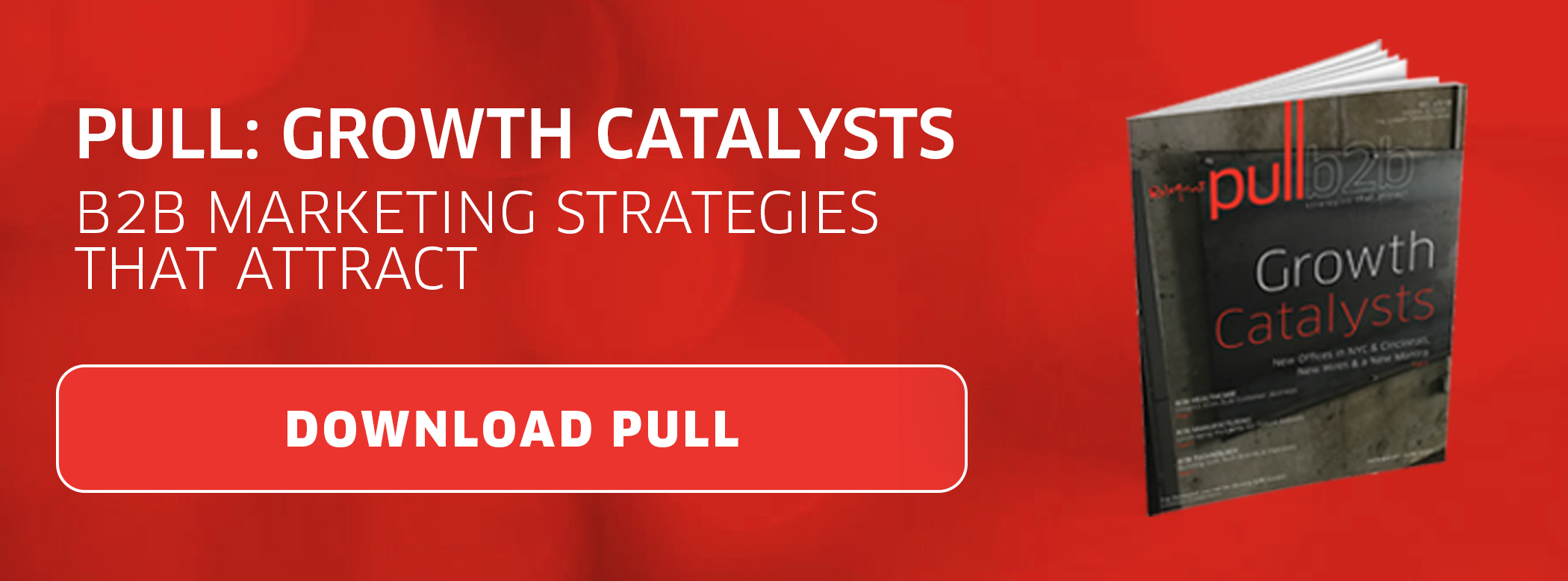 Today's marketers are collecting an immense amount of data from B2B prospects and analyzing it to make adjustments to their digital marketing strategies. But this process shouldn’t just be a reactionary one. If you want to make your buyers’ journeys as efficient as possible and give your conversions a boost, it's time to start anticipating the needs of your B2B prospects so you're ready when they find their way to your website. Here’s how.
Today's marketers are collecting an immense amount of data from B2B prospects and analyzing it to make adjustments to their digital marketing strategies. But this process shouldn’t just be a reactionary one. If you want to make your buyers’ journeys as efficient as possible and give your conversions a boost, it's time to start anticipating the needs of your B2B prospects so you're ready when they find their way to your website. Here’s how.
1. Beef Up Your Buyer Personas
Buyer personas likely have been in your toolbox for a while now, but that doesn't mean that you shouldn't take another look at them. The more information you have on your segments, the better prepared you'll be. Here are a few fresh places to find information to add context to your marketing:
- Customer Service. This team is on the front line every day, and their daily interactions with your current customers will tell you a lot about what your B2B prospects need and want for a better experience.
- Sales. Spend some time talking to your sales personnel to find out exactly what was said or done to close the deal, or what they think went wrong for a lost sale to see if you can identify common elements.
- Your Data. You already have the information; you just need to put it to work for you. Look for similar qualities among your best and worst customers and study the paths that were taken — from initial contact to sale — so you can try to match up similar prospects with a successful route.
2. Walk the Walk
Considering your buyer's journey is important, but when was the last time you took the walk yourself? When you put yourself in your prospect’s shoes, you'll gain a new perspective on the process and identify new ways to anticipate needs.
Kissmetrics recommends a process called "customer journey mapping," and it includes defining and exploring the different touchpoints your prospects have. The purpose is to gain a clearer sense of your prospect's motivations and expectations so you can create experiences based on those rather than only reacting to previous actions.
Depending on your resources, your map can be a timeline, infographic, storyboard or even a video, but the most important thing is that is shows the key interactions that customers have with your company. Include touchpoints such as how they discovered you (such as organic search, social media referral, etc.), how they first engaged with you (such as by submitting a form) and whether they purchased your product or service, why and why not.
When you get a clearer overview of your customer’s experience through the sales funnel, you should be able to see how to enhance their experience. This includes evaluating failed touchpoints. For example, did some prospects download your app, but never use it? Come up with a plan to re-engage them, such as by creating a drip campaign pointing out the benefits of the app or by having your customer experience team reach out to them directly, and re-evaluate the information you provide with the app when it’s first downloaded to encourage engagement.
3. Address Common Questions
No matter what industry your B2B prospects are in, some concerns are nearly universal. Ensuring that your content and materials thoroughly address these questions will make your buyers feel like you’ve heard their questions before they even asked:
- What Can I Expect? What do your sales and implementation processes look like? What are common timelines? Problems? Highlighting all the positive is good, but realistically there will be occasional snags. Put them out there, and include your workarounds. For example, you may want to create a FAQ that answers common questions, and link to blogs, case studies or other content that further answers your prospects’ questions.
- How Can You Help Me? Make sure your content reflects your ability to work successfully with a variety of business types and arrangements so you appear agile, and match up your materials with your prospect's industry so you're seen as the expert in their field.
- What is Your Pricing Structure? If your products and services have plain, direct pricing, make sure that’s highly visible on your website. If your pricing structure is more complex than that, it's still important to provide a range so prospects know if you're even in the same ballpark.
- What Have Others Thought? Customer reviews and testimonials are an essential part of doing business today. Go the extra mile on this one and ask a few current clients if they’d be willing to share their experiences to help out prospects who need a bit of extra assurance.
The Unasked Questions
Anticipating the needs of your B2B prospects means looking at their human experience as they interact with your digital assets and your company to uncover their unasked questions and their unmet needs. And you don’t need a crystal ball to do it. Instead, turn to the data you already have to gain new insights and improve the experience for your buyers. ![]()







 By
By 
